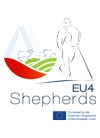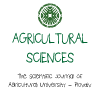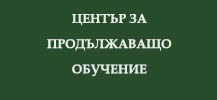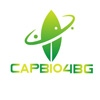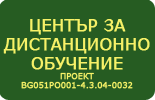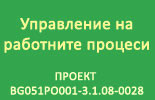Enzymology
|
Course title: |
Enzymology |
|
|
Course code: |
AFELK |
|
|
ECTS: |
3 |
|
|
In-class hours |
Lectures: |
15 |
|
Laboratory work/Tutorials: |
15 |
|
|
Self-preparation hours |
Practical training: |
- |
|
Other: |
75 |
|
|
Total hours: |
75 |
|
|
Language: |
English |
|
|
Study cycle: |
Bachelor |
|
|
Semester: |
Winter & Summer |
|
|
Faculty: |
Faculty of Agronomy |
|
|
Name of the lecturer(s): |
Assoc. Prof. Lyubka Koleva, PhD |
|
|
Mode of delivery: |
Face-to-face, distance learning, a combination of both |
|
|
Prerequisites: |
- |
|
|
Learning outcomes of the course unit: |
Enzymology is currently undergoing something of a renaissance and, with the completion of several genome sequencing projects, attention is turning from simply finding the structures of proteins to attempting to understand the structure-function relationships of proteins. Furthermore, the generation of new enzyme catalysts by directed evolution is opening the way to greater industrial use of enzymes. Enzymology is thus one of the most exciting areas of biochemistry today. The production of most industrially important chemicals involves enzymes. Similarly, most biochemically significant processes are biocatalysed. Research into biocatalysis is a major field in applied science and involves many areas of chemistry, notably in organometallic chemistry and materials science. Enzymology is relevant to many aspects of environmental science. Biocatalytic reactions are preferred in environmentally friendly green chemistry due to the reduced amount of waste generated, as opposed to stoichiometric reactions in which all reactants are consumed and more side products are formed. This course gives more information about enzymes – classification, function and their applicability to scientific and industrial work. |
|
|
Course contents: |
Lectures (15h): 1. Enzymes – universal biocatalysts. Native enzymes. (Enzymology – History. Structure of the enzymes. Type of cofactors – organic and inorganic. Metalloenzymes and vitamins. Isoenzymes. Inhibition and activation of the enzymes). – 2 h 2. Enzymes – classification and properties. (Oxidoreductases – properties and reactions. Type of oxidoreductases – anaerobic and aerobic dexydrogenases, oxidases, peroxidases, oxigenases. Mechanism of action. Application and examples. Antioxidative enzymes – biological role and type of biochemical reactions and processes in cells). - 3 h 3. Transferases – properties and reactions. Transferases – carriers of different types of groups – acyl groups, aldehide-, keto-, glycozide- and other. Application and examples. Hydrolases - properties and reactions. Hydrolases specific for ester, glycoside or peptide bounds. Application and examples). - 2 h 4. Lyases – properties and reactions. Type of lyases: C-C lyase, C-N-lyase. Application and examples. Isomerases - properties and reactions. Type of isomerases: racemases and epimerases, cis-trans isomerases and others. Application and examples. Ligases – properties and reactions. Type of ligases: generated C-O, C-S, C-N, C-C bounds. Application and examples). - 2h 5. Cell localization of the enzymes. (Comparative biochemistry of enzymes – enzyme set into different organs, type and groups organisms. Regulation of the enzyme reactions. Plants isoenzymes). – 2h 6. Modification of enzymes (immobilization of enzymes) and immobilization of cells. (Definition, carriers or sorbents – organic and inorganic. Methods of enzyme immobilization. Properties and application. Immobilization of cells. Advantages, procedures for immobilization, characteristic of catalytic properties). – 2h 7. Application of enzymes. (Application in agriculture and thremmatology; in biosensors; in industry). – 2h
Exercise (15h): 1. Basic principles of work with enzymes. Definition of enzyme activity. Methods of isolation, separation and purification of enzymes. – 2h 2. Enzyme extraction from fresh plant material. Homogenisation, salination, precipitation and centrifugation. Determination of protein concentration. – 2h 3. Determination of antioxidative enzyme activity – Catalase, Ascorbat peroxidase, Guaiacol peroxidase, Siringaldazyne peroxidase. – 4h 4. Determination of the activity of hydrolases – cellulase, pectinase, polygalacturonase and protease assay. – 4h 5. Methods for immobilization of enzymes. Assay for immobilized sucrase and urease. – 3h |
|
|
Recommended or required reading: |
Fundamentals of Enzymology – Nicholas C. Price. 1999 Enzyme Assay – Robert Eisenthal. 2002 Enzymes – Robert A. Copeland. 2000 |
|
|
Planned learning activities and teaching methods: |
Lectures, presentations, briefing, tutorials Dialogue methods (conversation, discussion, brainstorming) |
|
|
Assessment methods and criteria: |
Exercises evaluation, Written exam |
|
 - Събития по случай 80-я юбилей на АУ
- Събития по случай 80-я юбилей на АУ

